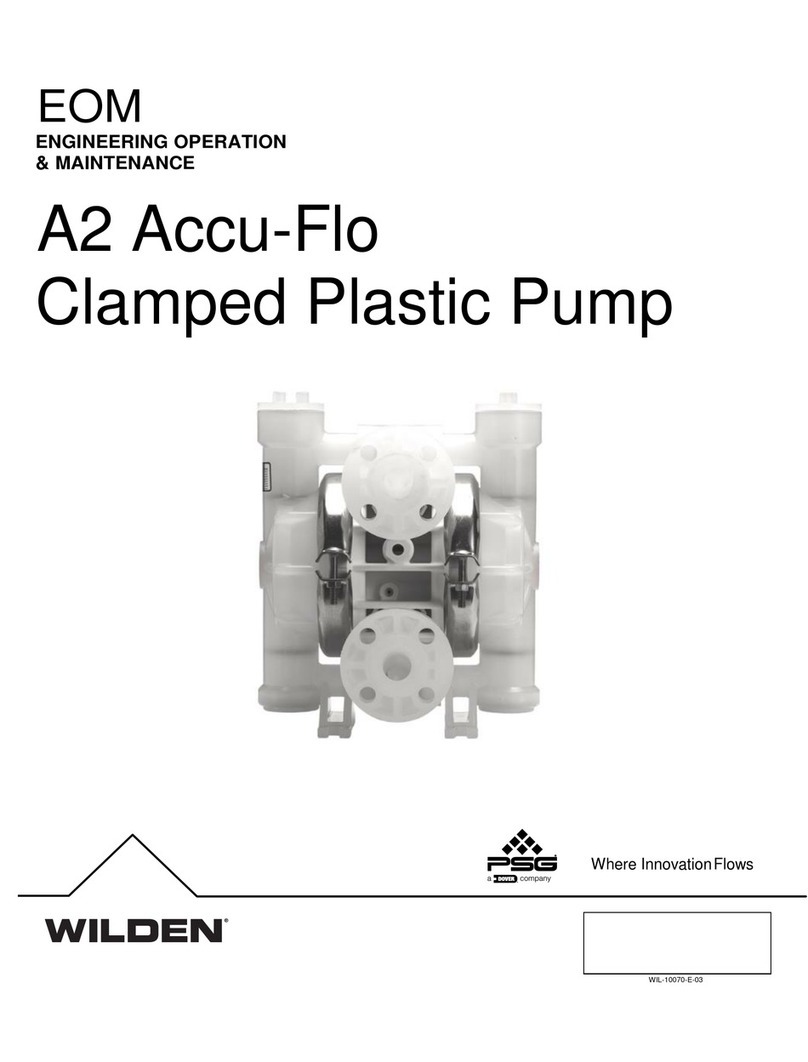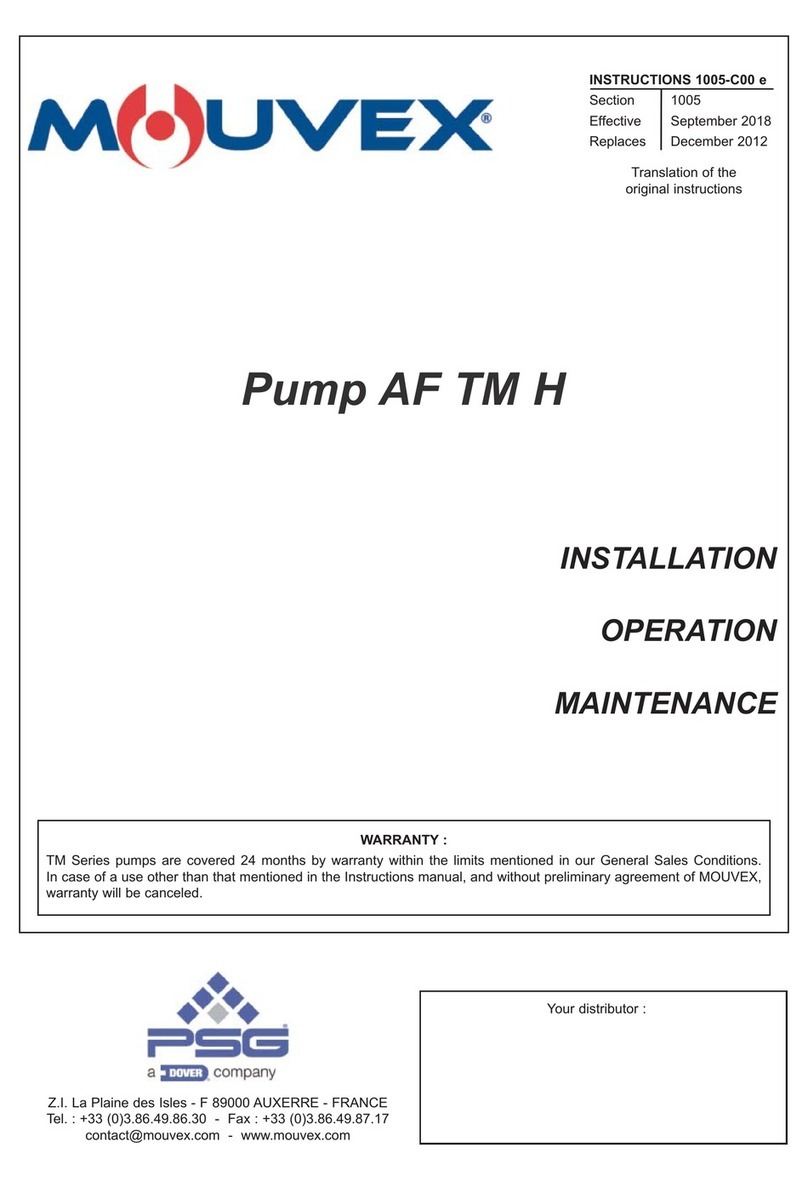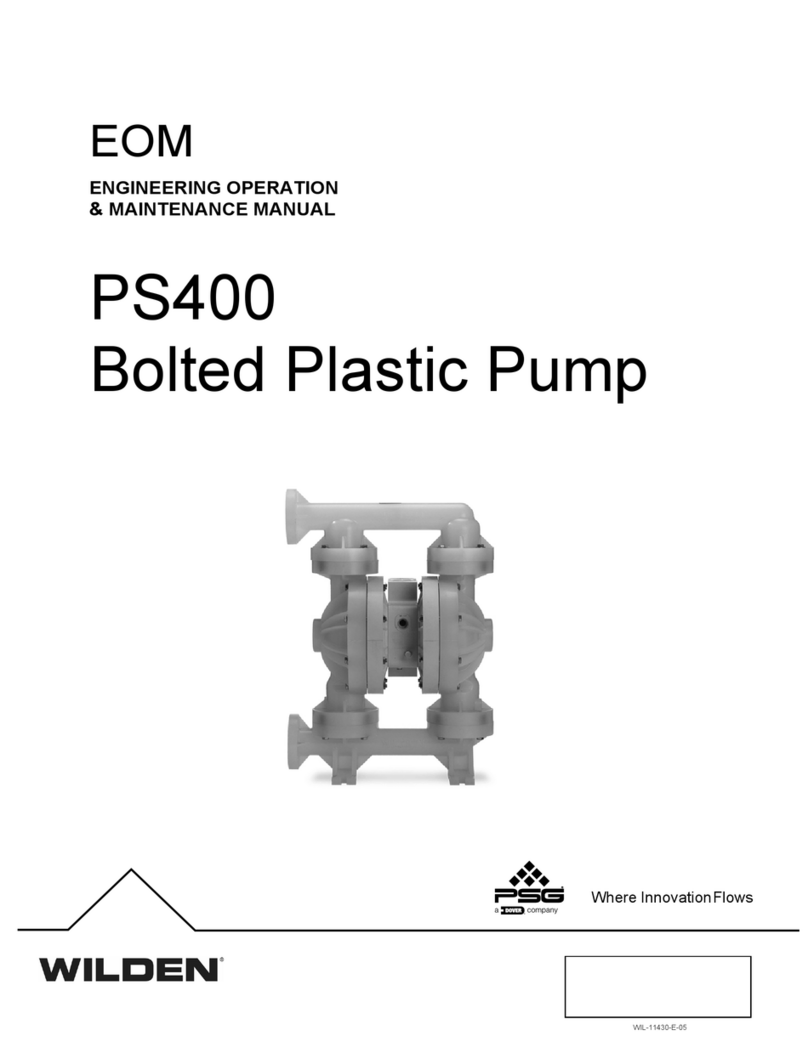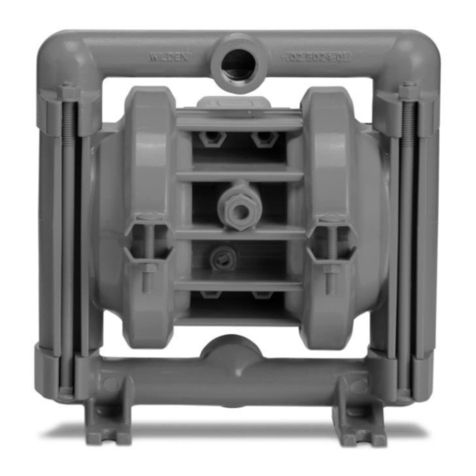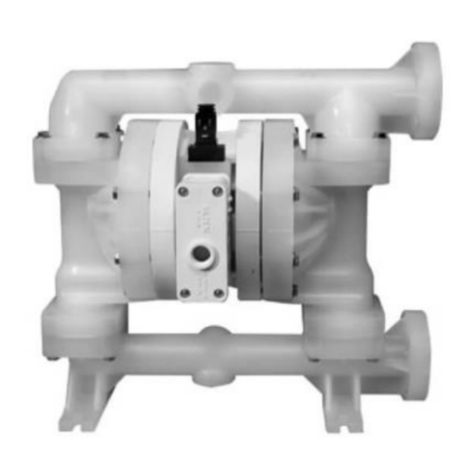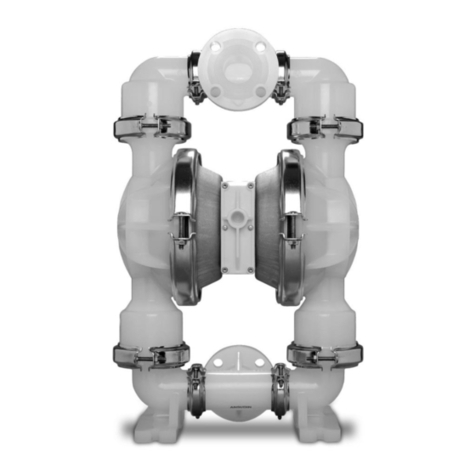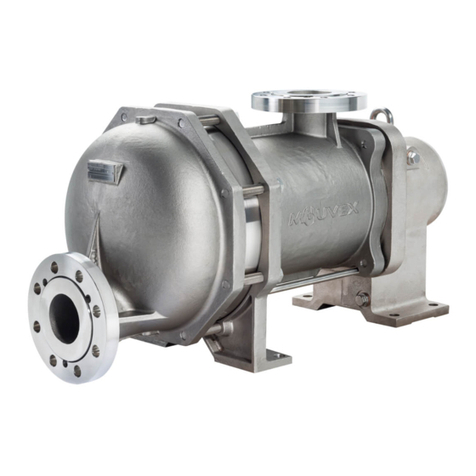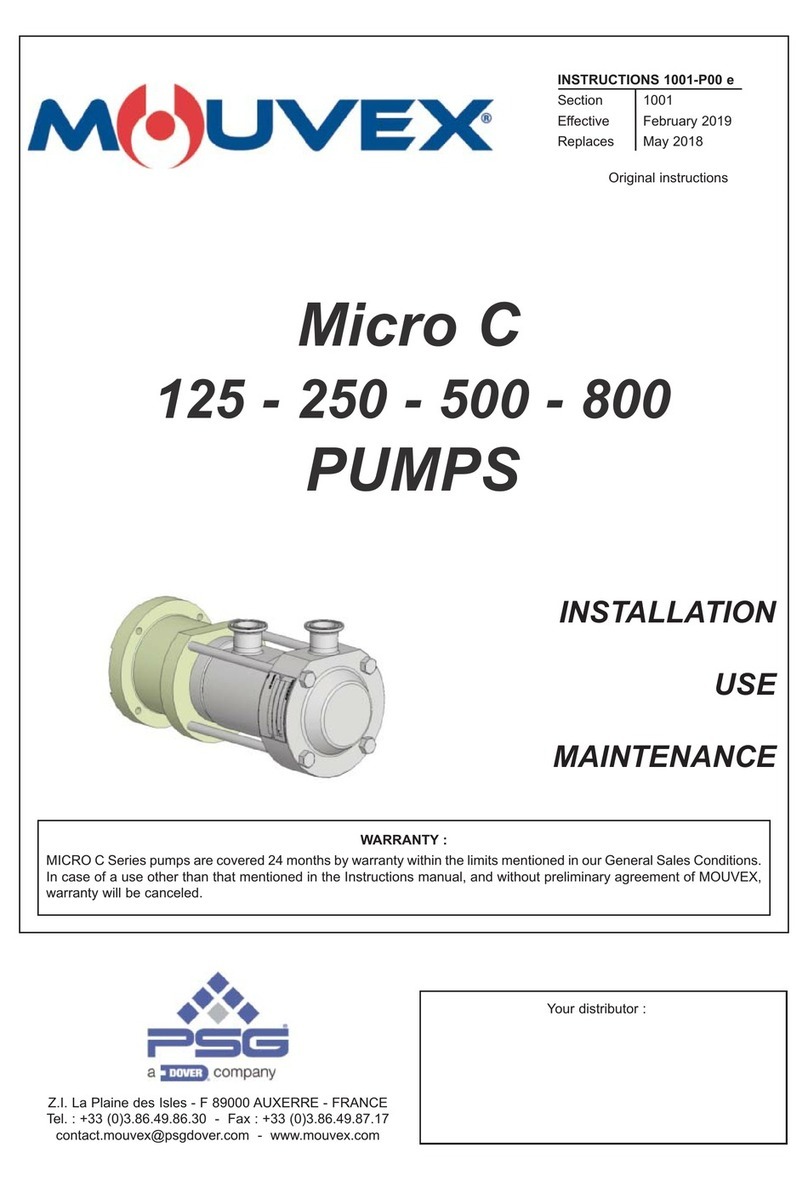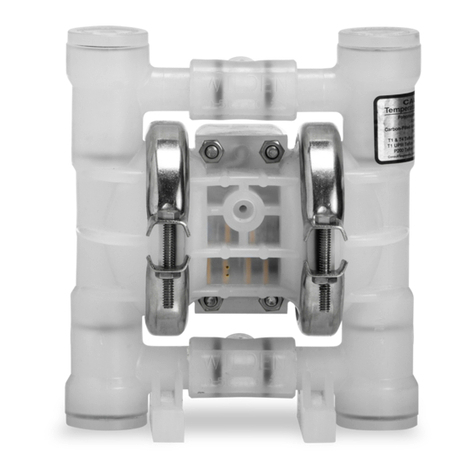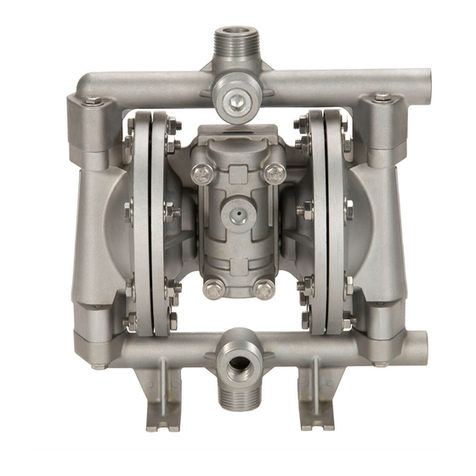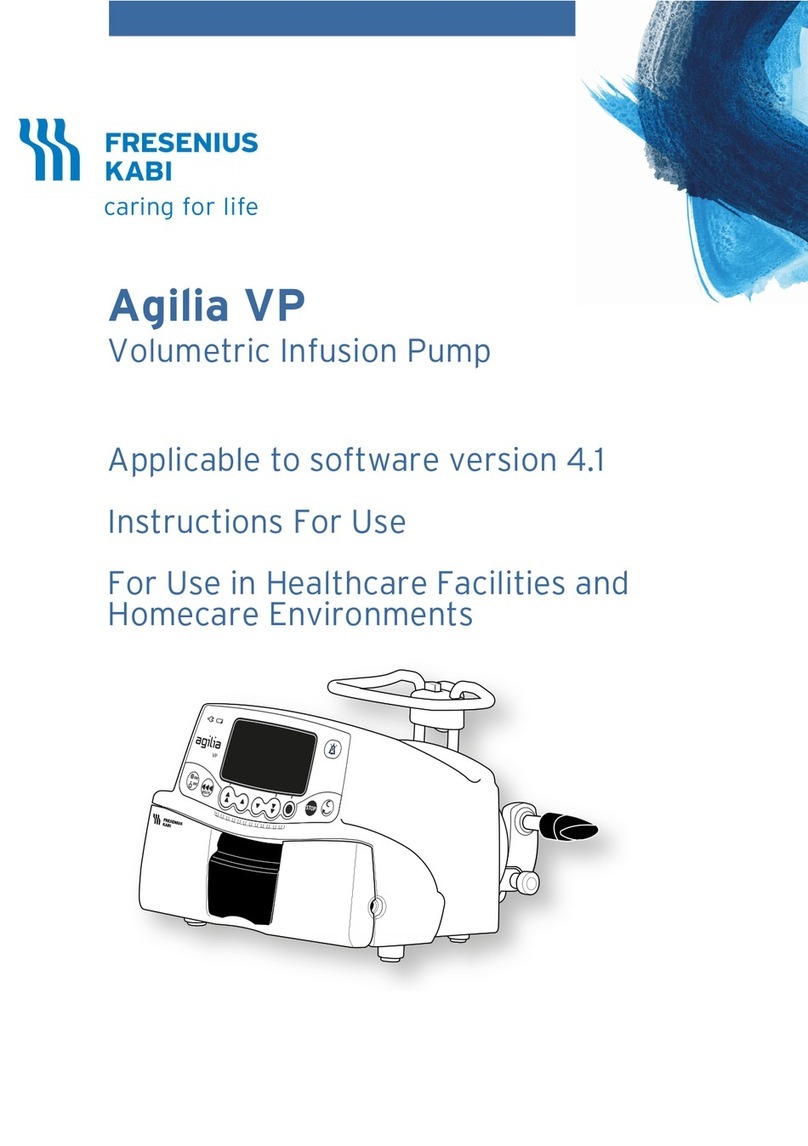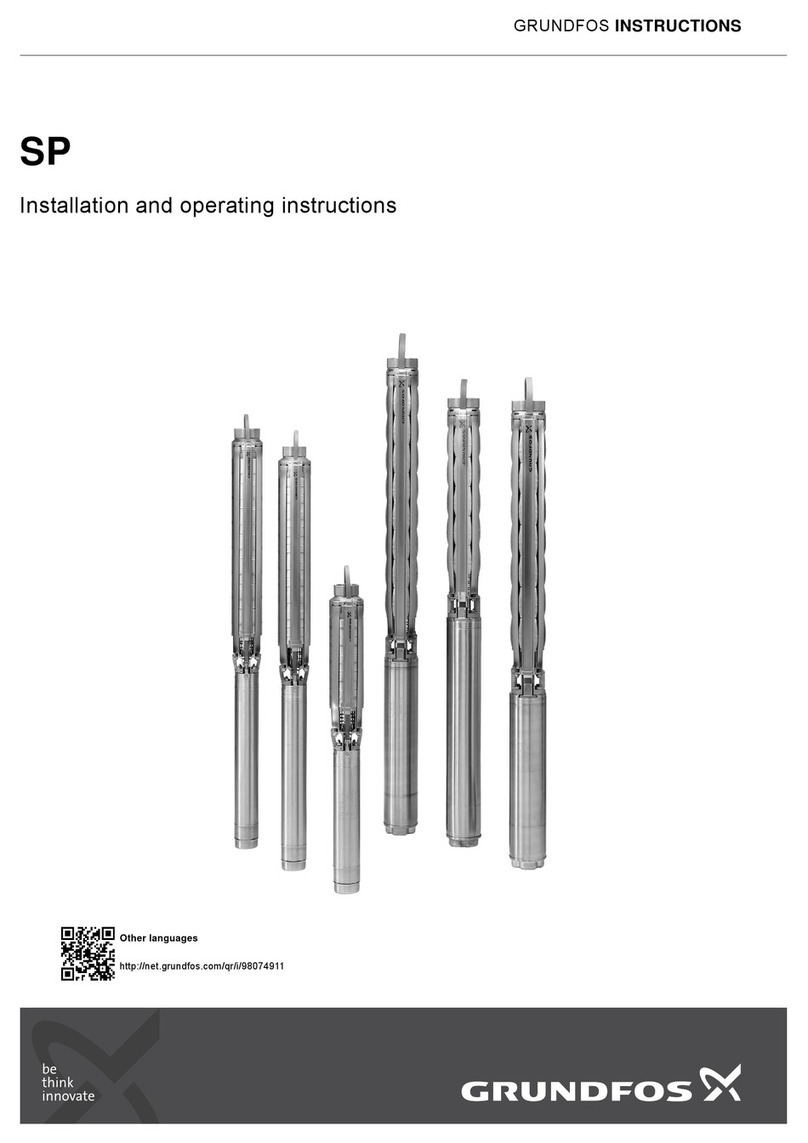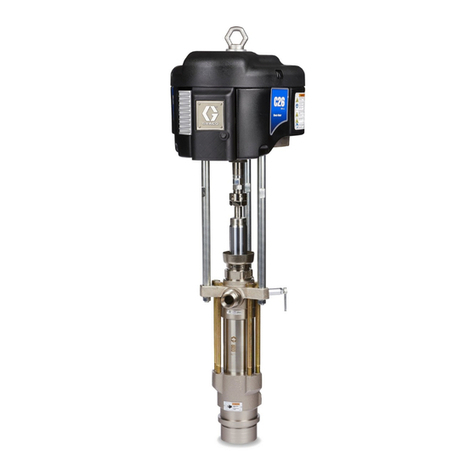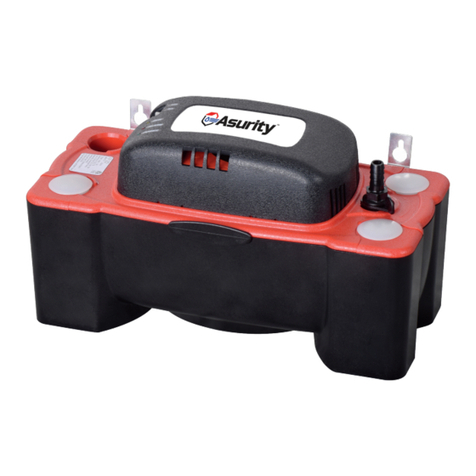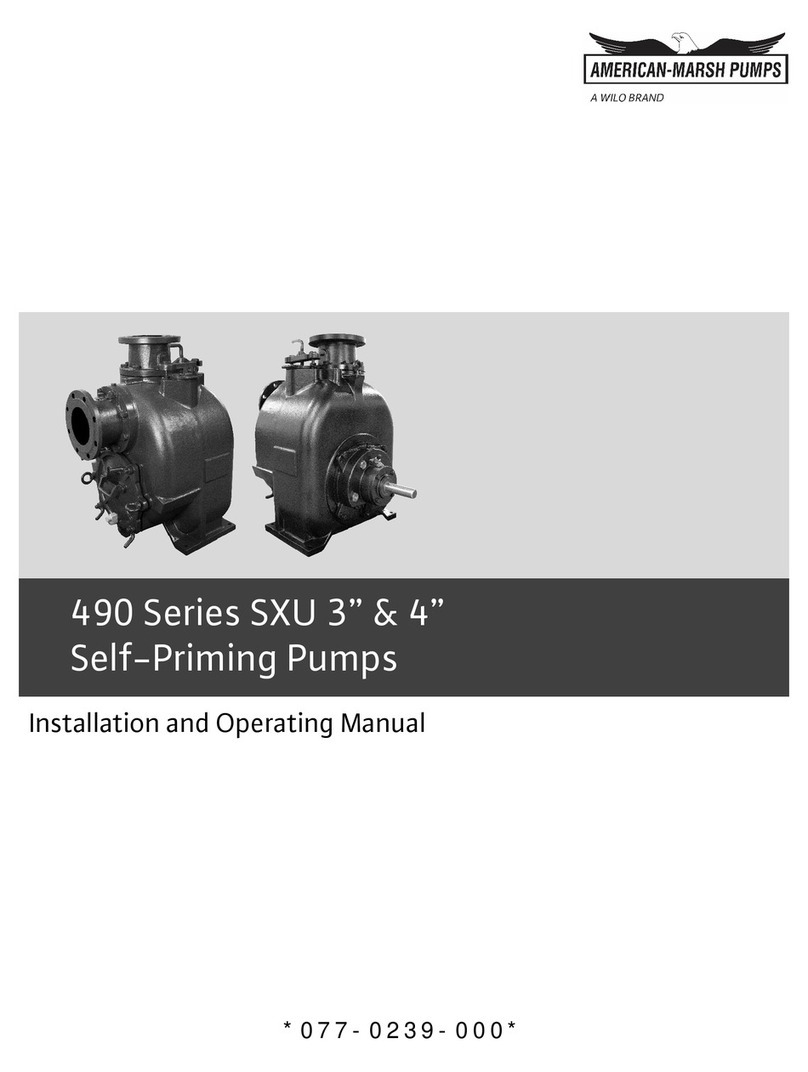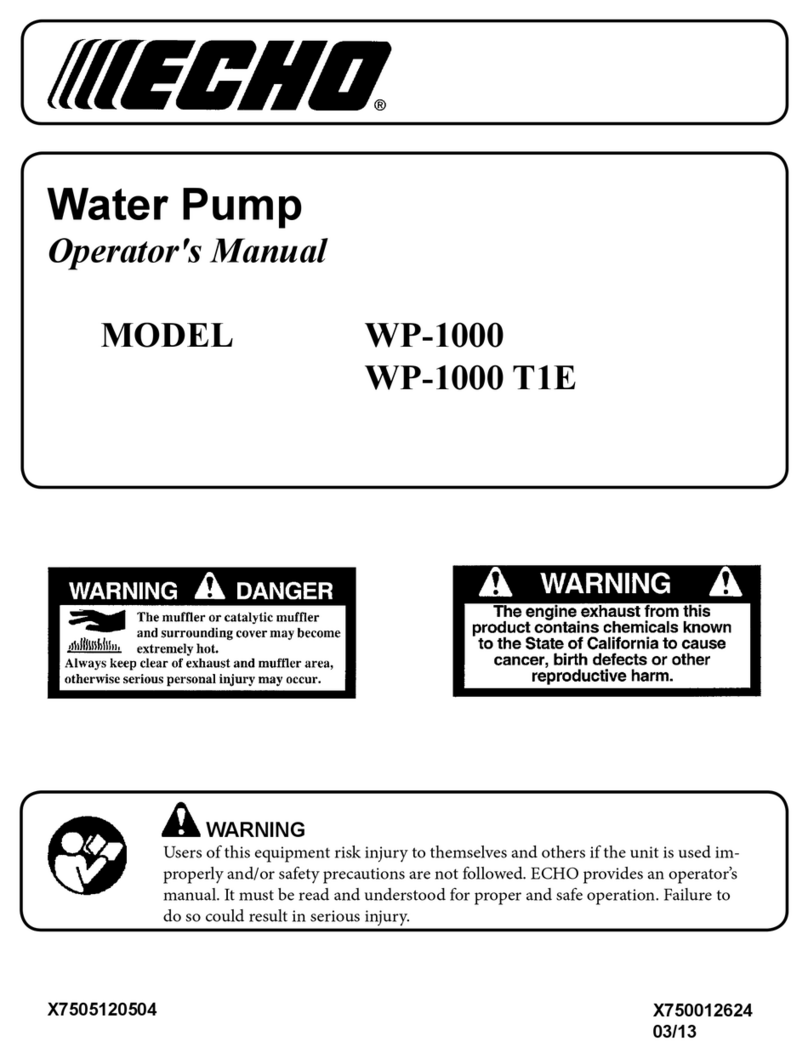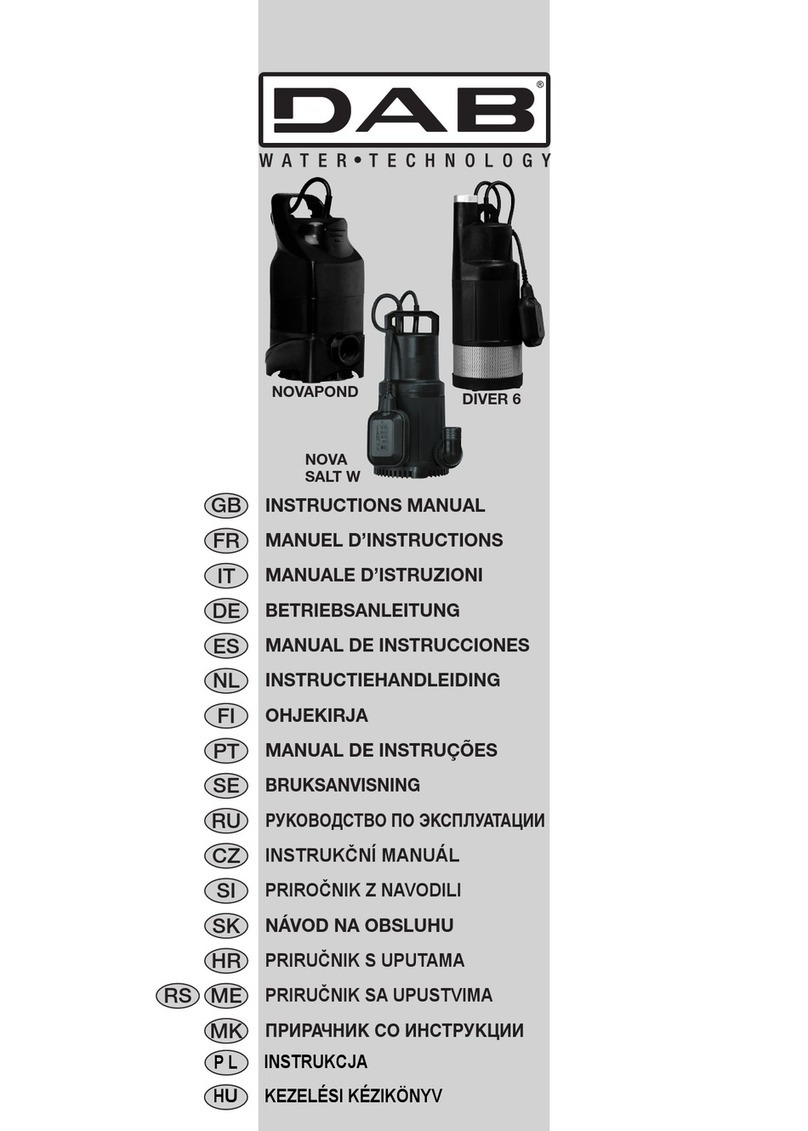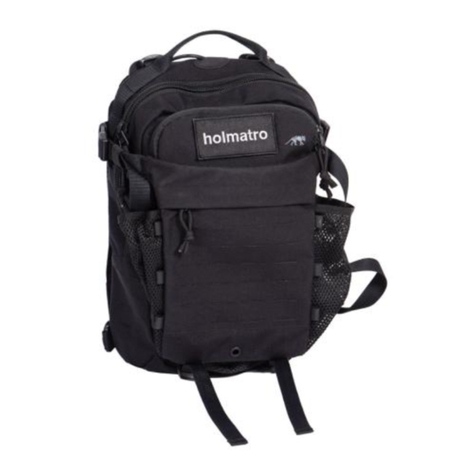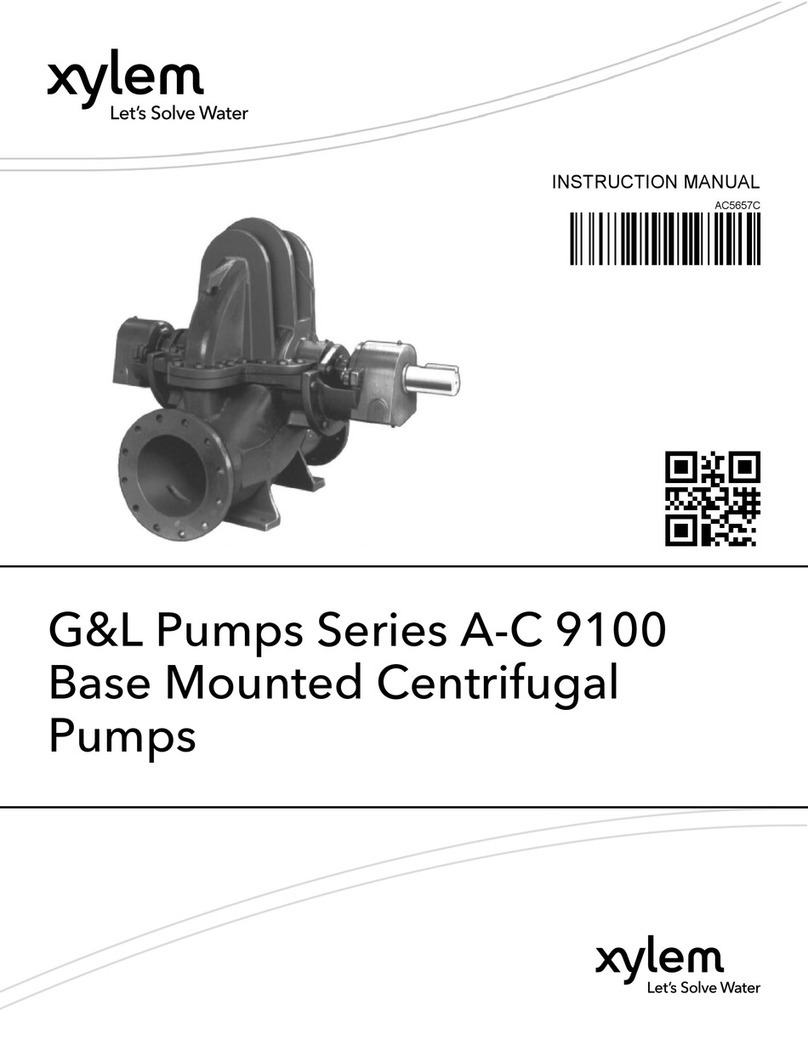9WILDEN PUMP & ENGINEERING, LLC
SECTION 6C
TROUBLESHOOTING
Pump will not run or runs slowly.
1. Ensure that the air inlet pressure is at least 0.4 bar (5 psig) above
startup pressure and that the differential pressure (the difference
between air inlet and liquid discharge pressures) is not less than 0.7
bar (10 psig).
2. Check air inlet filter for debris (see recommended installation).
A 5µ (micron) air filter must be installed in the air inlet line of the
pump to prevent air line particulate from entering and damaging
air system.
3. Check for extreme air leakage (blow by) which would indicate worn
seals/bores in the air valve, pilot spool and main shaft.
4.
Disassemble pump and check for obstructions in the air passage-
ways or objects which would obstruct the movement of internal parts.
5. Check for sticking ball check valves. If material being pumped is not
compatible with pump elastomers, swelling may occur. Replace ball
check valves and seals with proper elastomers. Also, as the check
valve balls wear out, they become smaller and can become stuck in
the seats. In this case, replace balls and seats.
6. Diaphragms may have a pinhole allowing air to escape to the liquid
side of the pump reducing performance. Check and replace
diaphragms as necessary.
7. Air valve may have debris from inlet air system. A 5µ (micron) air filter
must be installed in the air inlet line of the pump to prevent air line
particulate from entering and damaging air system.
Pump does not run.
1. Air supply line or discharge fluid line is blocked or a valve is closed.
Check valves for system and ensure they are set as desired, or
disassemble pump and check for blockage.
2. Muffler may be blocked with debris or other contaminates. This will
prevent air from exhausting. Replace muffler.
Pump runs and then stops with no external visible reason.
1. Ice within the air system may be blocking a port. Check system for
blockage and add a dryer in air inlet line to prevent moisture from
entering air system.
2. System air pressure may have dropped below system requirements.
This will not hurt the pump but will put the pump into a dead-head
condition. The pump will restart once air supply pressure is increased
or discharge head decreases below air inlet pressure.
3. Air system may have become blocked by debris. A 5µ (micron) air
filter must be installed in the air inlet line of the pump to prevent air
line particulate from entering and damaging air system.
4. Air system may need maintenance. Disassemble pump and replace
worn parts as necessary.
5. Diaphragm has ruptured and the product being pumped has flooded
the air system stalling the pump. Disassemble the pump, clean air
system of process fluid and replace diaphragms.
6. Air inlet line filter may be blocked with debris not allowing enough
volume into pump for proper operation. Check and replace air inlet
filter as necessary. A 5µ (micron) air filter must be installed in the air
inlet line of the pump to prevent air line particulate from entering and
damaging air system.
Pump runs but discharge flow decreases over time.
1. Ice within the air system may be reducing air flow in the pump.
Check system for blockage and add a dryer in air inlet line to prevent
moisture from entering air system.
2. Check air inlet line pressure to confirm a pressure drop has not
occurred. If air pressure has decreased, locate the source of the air
pressure loss and correct.
3. Debris from the air inlet line may have migrated into air system
prematurely wearing the seals. Disassemble pump and replace
parts as necessary. A 5µ (micron) air filter must be installed in the air
inlet line of the pump to prevent air line particulate from entering and
damaging air system.
Product comes out air exhaust.
1. Check for diaphragm rupture.
Pump runs but little or no product flows.
1. Check for pump cavitation; slow pump speed down to allow thick
material to flow into the liquid chambers.
2. Verify that vacuum required to lift liquid is not greater than the vapor
pressure of the material being pumped (cavitation).
3. Check for sticking ball check valves. If material being pumped
is not compatible with pump elastomers, swelling may occur.
Replace ball check valves and seals with proper elastomers. Also,
as the check valve balls wear out, they become smaller
and can become stuck in the seats. In this case, replace balls
and seats.
4. Pump may be operating too fast. Often to prime the pump, espe-
cially when at the maximum capability of the pump with the system
design, you must lower the air inlet pressure to achieve maximum
suction lift. Once primed, line pressure can be raised to meet system
requirements.
5. Abrasives in the product have deteriorated the valve ball or check valve
and a good seal against the valve seat is no longer being achieved.
Disassemble pump and replace worn parts as necessary.
6. Ensure a vacuum is not present inside the source fluid container.
Check that the tank/tote vent is open and air is allowed into the
tank/tote as product is being removed.
7. Check suction line for leaks and tight connections. In the event a
union is loose the pump will be unable to pull the product efficiently
into the pump. Tighten any loose suction line connections.
8. Check EOM for details on suction capabilities and ensure the
system design is within the suction capabilities of the pump.
Pump air valve freezes.
1. Condensation from the air line is most likely bypassing the
desiccant dryer or the dryer is beyond its useful life.
Replace/service dryer.
2. No dryer is installed ahead of pump, allowing moisture into air
system. This will damage air system and may render it inoperable.
Install a desiccant dryer on the air inlet line with a 5µ (micron) air filter.
Air bubbles in pump discharge.
1. Check for ruptured diaphragm.
2. Check tightness of housing bolts and integrity of o-rings and seals,
especially at intake manifold.
3. Ensure pipe connections are airtight.
Pump leaks between center section and liquid chambers.
1. Tighten all tie rods on pump to ensure a tight fit with the
center section.
2. The o-rings on the sleeves between the liquid chambers and center
section may be damaged. Disassemble pump and check o-rings for
damage and replace as necessary.
3. Diaphragms and/or o-rings may have been damaged due to incom-
patibility with chemical being pumped. Check chemical use chart
and select a material more appropriate for the process fluid.
4. Sleeves between center section and liquid chambers may be
damaged during maintenance. Disassemble pump and replace
worn or damaged parts as necessary.


















